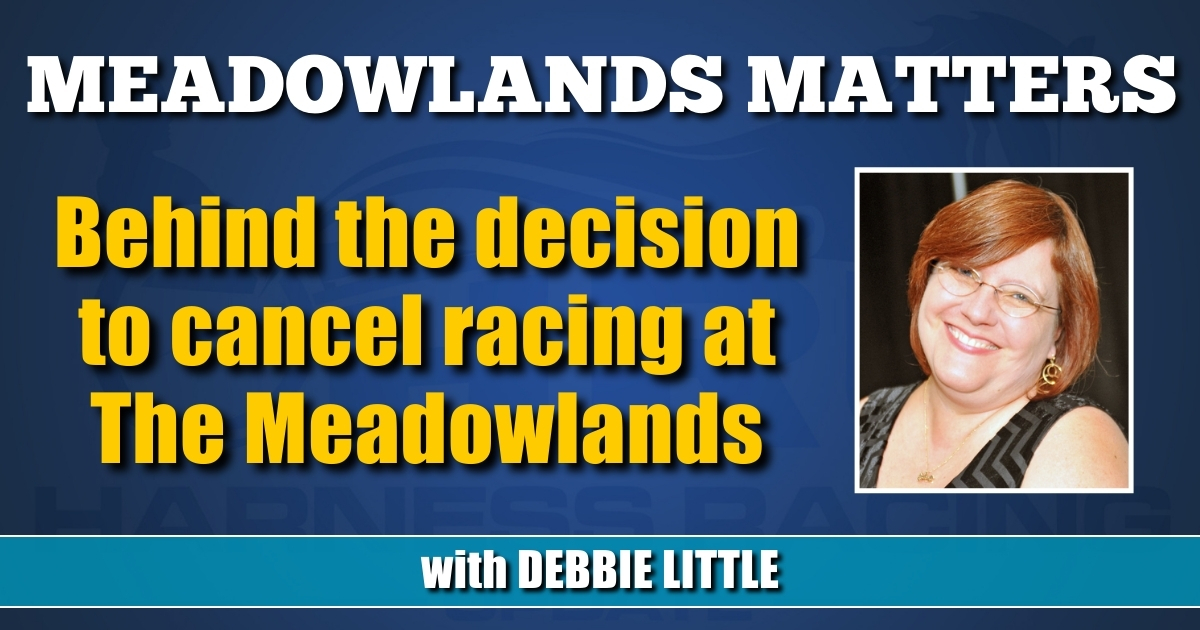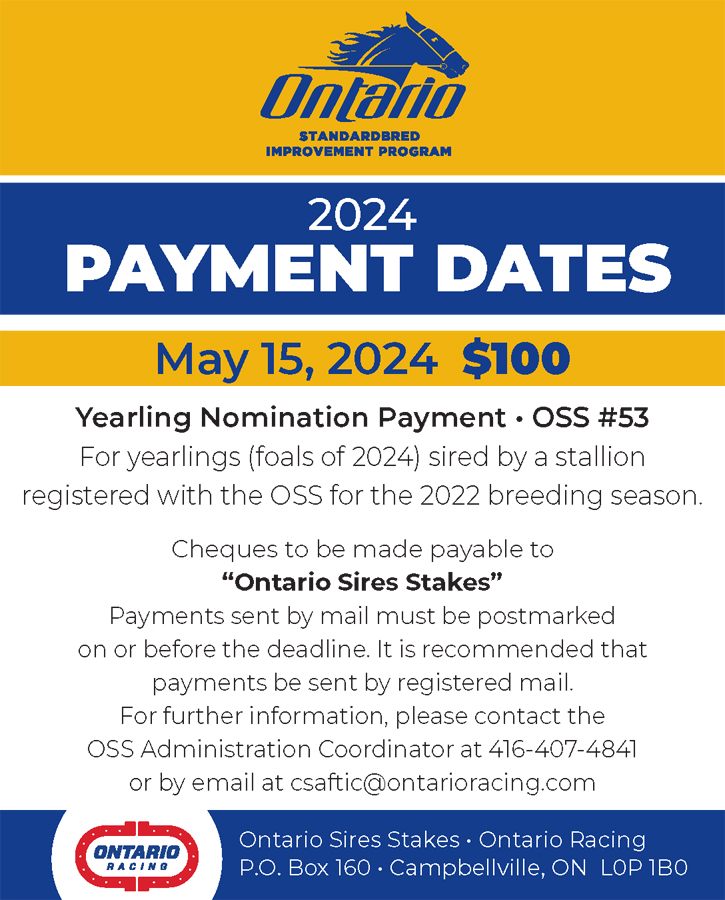

Behind the decision to cancel racing at The Meadowlands
The track canceled live racing last Saturday due to an abundance of caution and explains that a lot more goes into the decision than you might think.
by Debbie Little
When The Meadowlands decided to cancel the race card on Saturday (Jan. 6) out of an abundance of caution due to an impending winter storm, some took to social media to question the decision. After all, when all was said and done, the snow accumulation at the track’s home in East Rutherford, NJ was maybe an inch or two. However, those people aren’t seeing the forest for the trees, because The Meadowlands did not need to receive the full brunt of the storm for a cancellation to be necessary.
Even on the U.S. Trotting Association (USTA) website, the headline put on the cancellation story, “Meadowlands abandons Saturday live racing, remains open for simulcast and sports betting,” certainly set a tone considering the original headline sent out by the track was “Meadowlands live racing cancelled, track remains open for simulcasting & sports betting.”
“It was a poor choice of a title that the USTA decided to use,” said Jason Settlemoir, chief operating officer/general manager of The Meadowlands. “But it seems like there might be an inside agenda.”
Mark Ford, president of the Standardbred Breeders and Owners Association of New Jersey, has been in this business long enough to know that decisions rarely get 100 per cent approval and dissenters love to post their views.
“I know we caught a little bit of flack, but not much, that South Jersey was fine, but there would have been 50 horses probably scratched,” Ford said. “And not only that, but the people that did try to come, how are they going to get home? It started snowing at four o’clock and if you get stuck, you’ve got horses to worry about. So, you’ve got to think about the animals. [Racing] is not a life and death situation, it’s entertainment, so you have to put common sense into play, too.”
According to Ford, discussions start as soon as the weather reports come out early in the week, keeping in mind that cancelling, especially in the winter, throws off a horse’s schedule.
“Everybody wants to race, but after you’ve been through it a few times, you’ve got to use the common-sense factor.
“It’s unbelievable how much the weather changes 50 miles to the north, the west or the south. The last couple of years we’ve been very spoiled because we haven’t gotten [a lot of accumulating snow].”
According to local forecasters, the storm, which moved in from the west, was expected to drop 3-to-6 inches at The Meadowlands, 6-to-10 about 10 miles north and west, and possibly a foot or more further north, west or northwest about 50 or more miles from The Big M. An hour or more south of the track, where several farms are located in Central New Jersey, they were only going to get rain.
Ford’s training center is located 67 miles north of The Meadowlands housing 28 horses scheduled to race that night at The Meadowlands.
“Up by us, in Goshen, [NY], we literally had 16 inches of snow where there is none 50 miles south, but we knew it was coming and we were pretty much ready for it,” Ford said.
Ford reached out to horsepeople at his training center and at neighboring farms to get a general consensus as the week progressed.
“We do everything we possibly can to make it happen [and race],” he said. “But they said, ‘We just can’t go and we’re not going,’ and you cannot force people to put themselves in danger.”
The decision to cancel is complicated and involves many factors, the most important of which is the safety of the humans and equines involved.
“I knew to the north of us, to the northwest and to the west, the weather was going to probably be terrible,” Settlemoir said. “At the end of the day, the right decision was made, because they received several inches of snow in upstate New York and also north of us and northwest of us as the meteorologists had pinpointed.
“So rather than putting people’s lives in jeopardy, first of all, and horses’ lives in jeopardy, I always err on the side of caution. If the horsemen say they want to cancel, I cancel now. The last thing that I want to do is have somebody come to the racetrack with horses and get killed or get horses killed. I want to be able to put my head on my pillow at night and be able to rest easy knowing that the right decisions are being made to protect the horsemen and horsewomen and the horses.”
Settlemoir talked with his staff throughout the week and had multiple procedures in place depending on what track the storm took.
“We had a plan for racing, we had a plan for not racing, and we had a plan for not racing and remaining open with the sports book and simulcasting, the latter of which we ultimately did,” Settlemoir said.
Settlemoir even got a call from The Big M’s racing secretary, Scott Warren, with concern for the competitors if they did end up racing.
“On Friday night (Jan. 5), Scott Warren had asked me if he could put out a text for people that wanted to stay over at The Meadowlands on Saturday night with their horses if that was possible,” Settlemoir said. “I said absolutely because I knew the weather was going to more than likely be okay in East Rutherford.”
Another consideration with cancellations is timing.
“I tell everybody that unless it’s something freakish, if we’re going to cancel, you’ll know by noon,” Settlemoir said. “Unless there’s qualifiers in the morning. If there’s qualifiers in the morning and the weather looks dicey, then they’ll know the day before or possibly even the day before that.
“I knew I was going to lose between 40 and 50 horses and racing would have potentially put the horsemen and horsewomen and the horses and their vehicles and trailers in jeopardy.”
According to Ford, if they make this decision 10 times, they’re going to make mistakes, but this was not one of those times.
“I know we got a couple of hate mails from gamblers asking, ‘Why aren’t you racing?’ But this doesn’t start at seven o’clock [at night],” Ford said. “It starts at 10 o’clock in the morning when people have to get packed up and ready to go. You have to be there four hours out for Lasix, plus it’s another two-hour trip to get there.
“Everybody wants to wait until the very, very last minute, which is understandable, but sometimes you just can’t do that. It’s really, really, really tough to ask people to go and race all night and then fight the elements all the way home and get home in the wee hours of the morning. The storm could not have hit at a worse time, but I think we absolutely made the right call. It’s better to err on the side of caution than to get somebody killed.”















